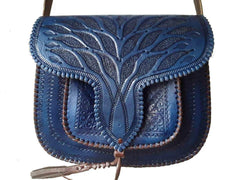The enclosures and fortifications of Rabat, capital of Morocco, are fully part of its historical heritage. The city was bounded in its history with three main enclosures, built successively in the late twelfth century, in the early seventeenth century and early nineteenth century, respectively under the Almohad dynasty, by the Moors and Alawites Dynasty.
The Almohad enclosure defines, in its construction, the western and southern sides of the city, the north and east is bordered by the sea and the cliffs overlooking the Bouregreg River. It is built in the year 1197 under the Caliph Abu Yusuf Yaqub al-Mansur.
The Andalusian enclosure built in the early seventeenth century marks a decline phase and fall of the City of Rabat. Built by the Moors families fleeing the Spanish Inquisition in the early seventeenth century, this small enclosure extends over a straight path. The curtain wall is fortified with a rampart walk protected by a parapet and punctuated by oblong towers, one of which is round: Borj Sidi Makhluf, which owes its name to a Jewish saint whose body rests nearby, patron of boatmen at the time (seventeenth century) .This defensive construction allowed to watch the movements of the boats in the estuary. Since its circular platform could monitor port.
The Alawite enclosure, built in the late eighteenth century, is long over 4.3 kilometers, covering over 420 hectares, bringing the city area to 840 ha. The west side of the Alawite enclosure doubles the Almohad enclosure on an almost parallel route, while the south side is a continuation of the south face of the Almohad enclosure, branching to it at its southwestern end.
Ocher, the remaprt color, has established itself in the traditional Moroccan pottery in zelliges, wall coverings but also weaves and leather accessories.





























